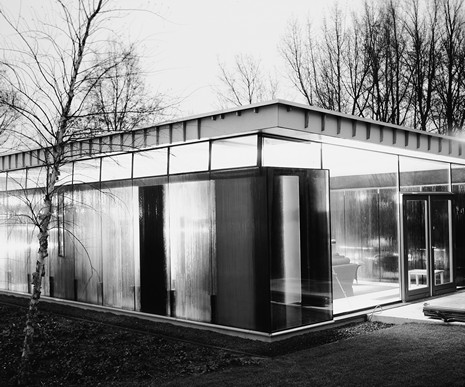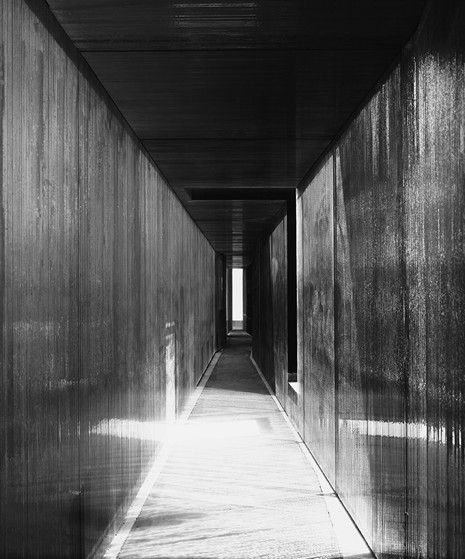Description
This building has already been published on frequent occasions, and can be defined as a kind of prototype for innovative use of glass as a constructive support structure. This fragile, apparently unstable material turned out to be suitable for realizing a house after a phase of extensive scientific research and a competition. Over 10,000 panes of glass were glued with a UV-resistant, permanently flexible glue, thus achieving the load-bearing capacity and resisting force of concrete. A concrete supporting structure as a basis floor provides the foundations with garage, studio, side rooms and an inner courtyard. Above this the space is allocated in such a way as to correspond with the image of a block of plate glass that has cracked and then been pulled apart.
This concept produces three zones: the central living area, separated from the main entrance by an inner courtyard, a side corridor and the bedroom, bathroom and changing area. Despite the fact that the interior rooms are permanently lit, it is not possible to look in because of reflective light refraction. In order to demonstrate the possibilities for new spatial figurations on the basis of this specific material quality, the room contours have been ‘cut out’ on the basis of a polygon. This adds a new dimension to ‘space’ and ‘living’: clear boundaries and contours are dissolved and blurred in favour of a spatial continuum divided up by ‘veils’. This runs counter to the function of a wall as a fixed envelope. It is precisely this use of a specifically unstable and fragile material as a load-distributing medium that demands something fundamentally new, with provocative irony. The ambiguity of a wall that keeps out prying eyes but is also translucent, a load-bearing yet immaterial construction, disturbs our perceptions. Hence the architects are pointing out new approaches, but also coming right up to their boundaries. “It is a temple of elegantly frozen light that is deliciously serene.” (S. Hirokawa in: T+T, text and translations, Amsterdam 2002)
Drawings
Site plan
Building concept as ‘cracked glass’ and split volume
Basement floor with drive and garage, studio and patio, ancillary rooms
Ground floor with main entrance, patio and living/dining/cooking area as central sequence of space and flanking bedroom/bathroom area and corridor as independent glazed zones
Cross section through building and terrain
Photos

Exterior view at night

Interior view of the corridor
Originally published in: Klaus-Peter Gast, Living Plans: New Concepts for Advanced Housing, Birkhäuser, 2005.